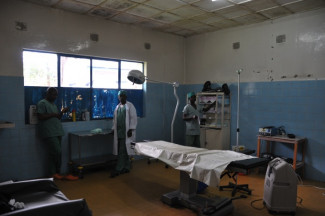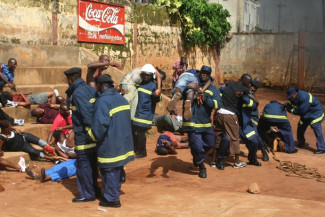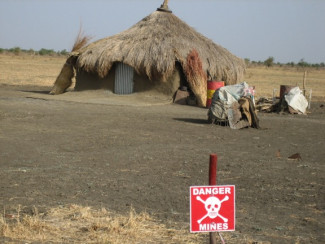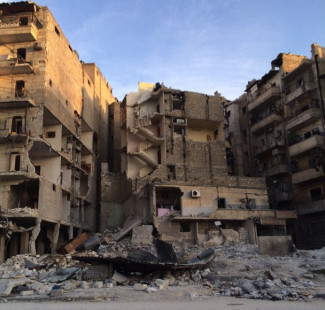
Johns Hopkins UniversityEst. 1876
America’s First Research University
Five Essentials for Surgical Care During Conflict & Disaster

With numerous ongoing conflicts and disasters occurring around the world, the work of surgical humanitarians is never ending. To understand the context and prepare to provide surgical care under such conditions, it is essential to know the following:
- Learn how to do a C-section

Most people are surprised to learn that C-sections are the most common surgical procedure performed both during conflicts and after a disaster. A study using Doctors Without Borders/Medecins sans Frontiers data highlighted this issue and documented that of more than 90,000 procedures performed in over 20 countries, more than 25% were C-sections. The ability to do this procedure and provide maternal health in general is a key point when planning humanitarian interventions or working as a surgical humanitarian.
To learn how to do C-sections and treat other common surgical problems in low-resource settings, surgeons and other health can professionals can take an “International Humanitarian Aid Skills Course” run each year at Stanford University.
- Become a surgical MacGyver and know how to save lives with limited resources

Despite limited resources in many developing countries' health facilities, there are many interventions that can be done to limit the numbers of deaths and reduce permanent disabilities. A landmark paper by Robin Coupland of the International Committee of the Red Cross discussed the issue of an “Epidemiological approach to the surgical management of the casualties of war.”
An essential text on how to provide surgical care in resource-limited settings is Primary Surgery, edited by Maurice King.
- Practice for mass casualties and know how to triage injured patients

Mass casualty incidents are defined as an influx of injured patients that overwhelms a health system. In the developing world many health facilities have limited resources and have difficulties under normal conditions, any increase in patient load either from conflict or after a disaster can lead to a breakdown in care. It is essential to have disaster plans and practice for mass casualty events.
Triage is derived from the French word that means to sort. It is the process by which injured patients are sorted into categories based on the severity of their wounds, the likelihood of survival, and the amount of resources they will need. It is the concept of providing the best for the most and is an essential surgical humanitarian skill.
- Know how to recognize landmines and unexploded ordinance

In many conflict and post-conflict settings, landmines and unexploded ordinance (UXO) injure and kill civilians, mostly women and children, much more than soldiers. Although an international treaty bans the use of antipersonnel landmines, they are still used and can also pose a risk to humanitarians. Knowing how to recognize landmines and UXO is essential.
For additional information, consult the United Nations Mine Action Service's “Landmines, Explosive Remnants of War and Improvised Explosive Devices Safety Handbook.”
- Know that health facilities are no longer safe from attack

Most countries are signatories to the Geneva Conventions, which established rules for war. One of the basic tenets is that health facilities and health workers must not be attacked. Sadly, such attacks are occurring with increasing regularity, and health care workers and patients suffer. A study in the journal Surgery documented the surgical care performed over the 4 years that a Doctors Without Borders/Medecins sans Frontiers trauma center in Kunduz, Afghanistan was operational. It was destroyed in October 2015.
To address this growing problem, The Safeguarding Health in Conflict coalition works to raise awareness of the problem of attacks on health workers, facilities, transport systems, and clients; strengthen the documentation of such attacks and increase accountability for violators; and empower local groups to play a safe, active role in documenting attacks and demanding accountability at national and international levels.
For more about surgical care during conflict and disaster, order a copy of Operation Crisis: Surgical Care in the Developing World during Conflict and Disaster. It is the 2nd book in the Operation Health series of global surgery books from JHU Press edited by Adam L. Kushner, MD, MPH, FACS.
Adam L. Kushner, MD, MPH, FACS, is an associate in the Department of International Health and a faculty member in the Center for Humanitarian Health at the Johns Hopkins Bloomberg School of Public Health. The founding director of Surgeons OverSeas, he has provided surgical care to patients in conflict, post-conflict, and disaster settings around the world. He is the editor of Operation Health: Surgical Care in the Developing World and the coeditor of Operation Ebola: Surgical Care during the West African Outbreak.


